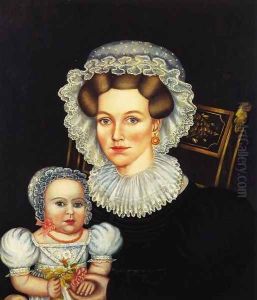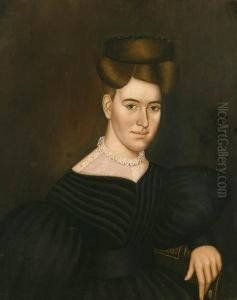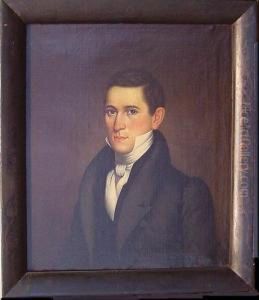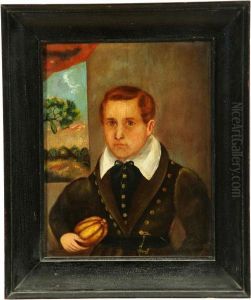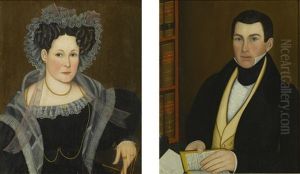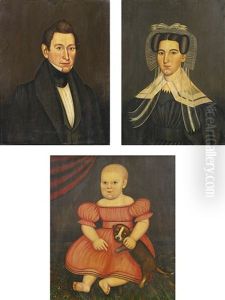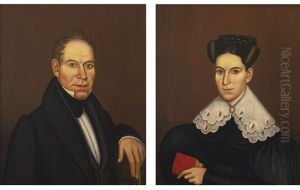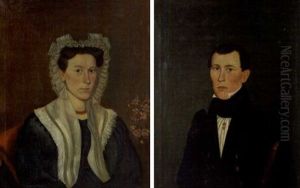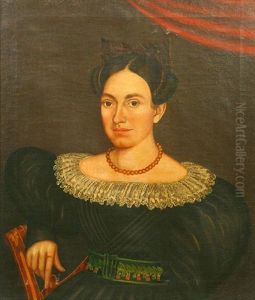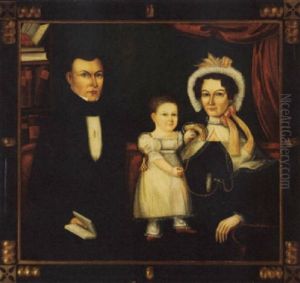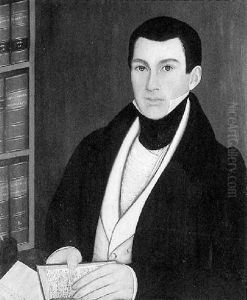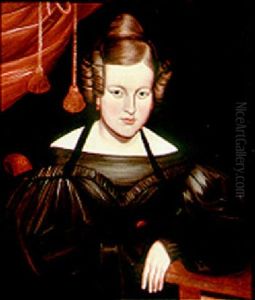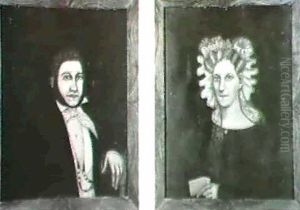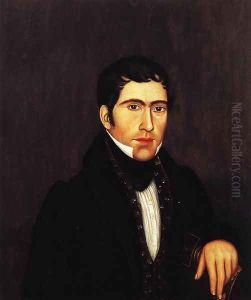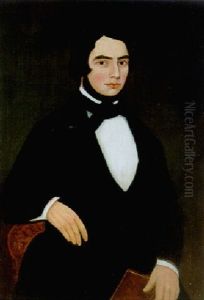Noah North Paintings
Noah North, an American folk artist of the 19th century, was born in 1809 in Dutchess County, New York. Despite not being as widely recognized as some of his contemporaries, North's work provides a valuable glimpse into the cultural and social landscape of rural America during his lifetime. His oeuvre primarily consists of portraits, a common genre for itinerant artists of the period, who traveled from town to town offering their services to those who wished to have their likenesses captured for posterity.
North's early life is shrouded in relative obscurity, as is the case with many itinerant artists of his time. It is believed that he was largely self-taught, developing his skills through practice rather than formal training. This autodidactic approach was not uncommon among folk artists, who often had to rely on their ingenuity and resourcefulness to make a living. North began his career as an itinerant painter in the 1830s, a time when America was expanding westward, and the demand for portraiture was growing among the middle class and affluent families in rural areas.
Throughout his career, Noah North traveled extensively across the northeastern United States, leaving behind a trail of portraits that serve as a testament to his skill and dedication to his craft. His works are characterized by their straightforward, unembellished style, with a focus on the sitter's face and upper body. North's portraits are notable for their detailed depiction of clothing and accessories, which provide insights into the fashions and personal tastes of his subjects. These paintings not only offer a window into the lives of individuals and families of the period but also reflect the broader cultural and social dynamics of 19th-century America.
Despite his contributions to the field of American folk art, Noah North's work was largely forgotten after his death in 1880 until a resurgence of interest in folk art in the 20th century brought his paintings back into the public eye. Today, his portraits are appreciated not only for their aesthetic qualities but also for their historical value, offering scholars and art lovers alike a glimpse into the world of 19th-century rural America. North's legacy is preserved in various collections and museums, where his work continues to be studied and admired for its unique blend of historical documentation and artistic expression.
